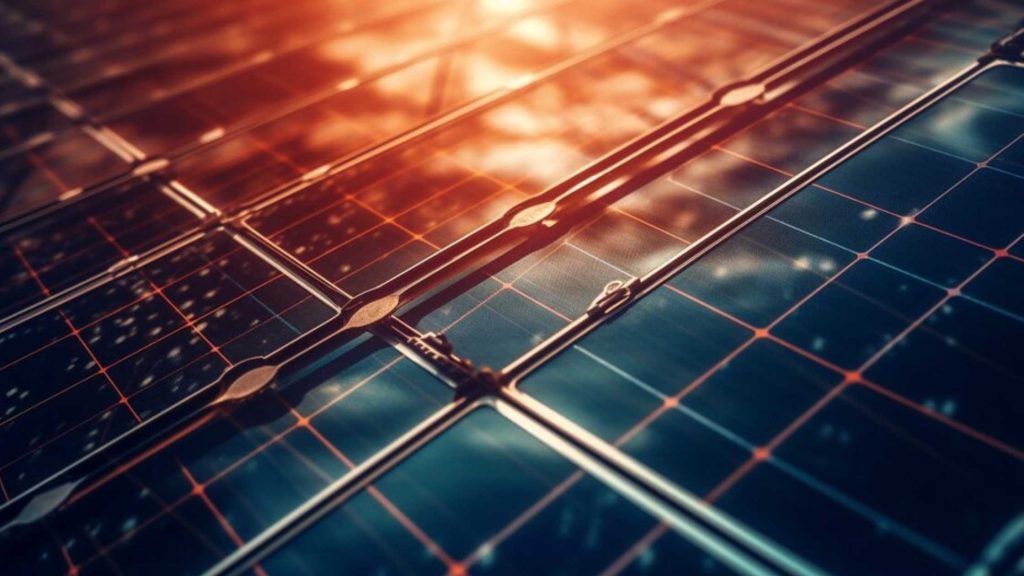The technological adaptation of solar energy has marked a moment in the battle being fought against climate change; the world is changing and moving towards renewable power.
In 2025, we are seeing a crest of solar technology advancements that will lead to solar energy production that is more efficient and affordable than ever and accessible like never before. Whether it be solar panel technology that effectively doubles the efficiency or science fiction like solar power farms in space, these developments are not only changing the way we harness the sun—they are transforming the nature of energy generation. In this blog on solar technology breakthroughs 2025, we will explore the latest solar panel innovations and future solar energy trends.
Ultra-Efficient Solar Panels – Solar Technology Breakthroughs 2025
In 2025, the researchers are making history, as the holy grail of solar technology has been efficiency. The conventional silicon panels normally convert up to 20 percent of sunlight into electricity. However, recently developed models based on multi-junction cells and tandem constructions using perovskites and silicon are already in the realm of real-world efficiency levels of more than 30 percent. Such performance improvement will allow homeowners, businesses, and solar farms to produce much more power on the same area of land and is a key benefit in urban centers where space is constrained to rooftops.
The new sunset solar panel technologies are also increasingly more durable, as they have been coated with a dust-repelling and weather-resistant coating on them that can easily last decades.
Durable Perovskite Solar Cells
One material that has captured solar research news more than any other is a material called perovskite. These cells are less rigid, lighter, and cheaper to produce when compared to the conventional silicon panels. One of their recent handicaps had been short life and susceptibility to moisture, which during many years had been the cause of numerous complaints. However, the development of the perovskite cells has been stunned by the discovery of the stabilizing process to gain more than 25 years of life for the perovskite cell ratio by the year 2025, according to the scientists.
Perovskite is nearly only limited because of its flexibility. It can be embedded into textile electronics and portable chargers and even applied to current solar panels to enhance their output. The flexibility makes it possible to integrate solar into many other industries, transportation, and consumer electronics.
Building-Integrated Photovoltaics (BIPV)
It is possible to visualize skyscrapers that can produce their own electricity in their glass windows or homes that have solar roof tiles that appear exactly like the conventional roof shingles. And this is what Building-Integrated Photovoltaics (BIPV) offers: a design-minded solar solution that is gaining popularity as a future trend in the world of solar energy. BIPV uses a solar generating material to substitute and replace building materials—facade panels, transparent solar glass, and aesthetic roofing systems.
The technology is not only cost-effective in the generation of renewable energy, but it also removes the need for individual installations of solar. This can be appealing in the backdrop of architects and developers. With BIPV design, they are becoming one, making entire buildings function as power plants with no compromises.
Floating Solar Farms
The large-scale solar installation always had a problem with land scarcity, but floating solar farms are changing that. In Taiwan or in other countries such as Japan, China, or Singapore, floating solar is also a strategic option in order to make the greatest use of spaces without risking land reclamation in agricultural areas. Moreover, floating solar farms will decrease evaporation of water, which is essential in areas experiencing water constriction. The innovation is one of the solar technology breakthroughs 2025, since it will entail generating renewable energy and conserving water, which is a win-win situation as far as sustainability is concerned.
Also Read: Top Solar Power Companies in India
Next Generation Energy Storage: Future Solar Energy Trends
Solar energy is clean and abundant, but the intermittent nature of solar energy has been a hitch to 24/7 reliability. Here next-generation energy storage appears. By 2025 the creation of new types of solar power batteries will be stored five times better and at a hundredth of the old cost due to lithium-sulfur, sodium-ion, and solid-state batteries. These energy storage systems have the ability to maintain homes and businesses during nights, days with cloudy skies, and even times when the grid network fails.
They also play key roles in supporting national energy grids as renewable energy resources get more online. Such a move lies in the center of the future solar energy trends, as it makes a genuinely reliable and independent clean energy system possible.
Space-Based Solar Power
Space-based solar power has long been science fiction but is finally becoming a reality in 2025. The technology entails bringing a satellite, which has solar panels set up, to gather power in space, where it is sunny all the time, to beam it to the earth using microwaves or lasers. These systems can provide clean power constantly, without the interference of the atmosphere and without diminution during the night. Ambitious attempts are being tried out in Japan and China, with early prototypes already indicating progressive results and with the possibility of limitless renewable energy.
AI-Driven Solar Optimization
Artificial intelligence algorithms can automatically optimize the angles of panels to the amount of sunlight present, predict how much energy they would need, and even clean themselves to perform the best. In giant solar gardens and BIPV in cities, the use of AI decreases the cost of maintenance, maximizes output, and enables the energy supply-demand balance with smart grids, which makes solar energy more reliable than before.
Conclusion
A cleaner, more sustainable future is one step closer with the solar technology breakthroughs 2025. Angled towards the latest solar panel innovations, sturdy perovskite cells, building‑integrated systems, floating PVs, and next-generation storage, these inventions are transforming how we use and store the energy in the sun. However, their potential lies in ensuring future solar energy trends are more efficient and cheaper in use, besides making it more available; hence, they have a very high potential despite being in the scaling-up phase presently.


